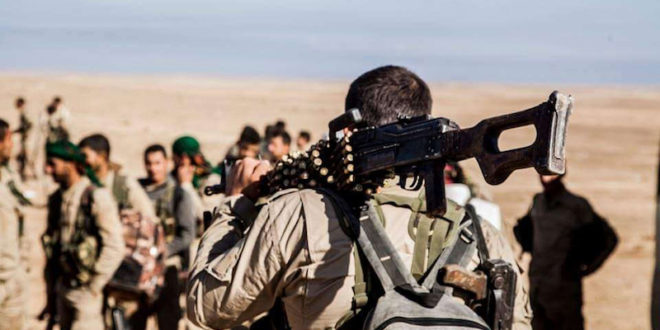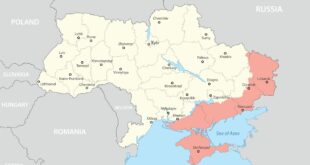Shehab Al-Makahleh and Maria Dubovikova
The future of Syria is now being decided in Amman after the withdrawal of Syrian armed opposition troops from neighborhoods near the Jordanian-Syrian border, leaving the crossing point of Naseeb under the control of the Syria Arab Army (SAA). The fate of Syria, and importantly the future of its president, will heavily influence future developments in the polarized region as Middle Eastern states which are divided over the civil wars in Libya and the Qatar crisis are also opposing stakeholders in the Damascus regime’s fate.
An announcement of a ceasefire in southwestern Syria came on June 30, 2017, paving the way for another ceasefire in northern Homs, forcing the armed opposition to move to Idlib. Due to the benefits for both the government and the opposition from the truce, which has been a relief both parties, the regime, its enemies, along with the Russians and Americans, are also considering expanding the de-escalation zones to include eastern Ghouta (Reef Damascus) and the Southeast area by the Jordanian and Iraqi borders following Daesh’s fall in Deir Ezzor.
The expansion of the de-escalation zone in eastern Ghouta is aimed at avoiding clashes between the SAA, its allies, and the US-supported opposition on the ground in that area. The Russians and Americans also coordinating in the area of Deir Ezzor to prevent the Kurds from retaking the lands after the demise of Daesh because Turkey – a major US ally in the Middle East region – is not willing to see a Kurdish state along its southern border. The SAA recaptured the last major stronghold of Daesh on the way to Deir Ezzor. This is the caliphate’s last important stronghold in the central Syria.
Unlike the Russians, the Americans are not in a rush to end the conflict in Syria and they just seek to avoid any armed conflict near the country’s borders with Jordan and Israel. On the other hand, Saudi Arabia, a main backer of Syrian opposition, is concerned about the future of Syria and its president. This is clear in the statement issued by Saudi ministry of foreign affairs, which read that Riyadh, still supported an international agreement on the future of Syria and Assad should have no role in any transition to bring the war there to an end. The statement reveals that the position of the kingdom on the Syrian crisis is firm, and it is based on the Geneva 1 Communiqué and on U.N. Security Council Resolution 2254 which stipulates forming a transitional body that will run the country. Thus, Saudi Arabia does not want Syria to be another Arab country where Iran consolidates its influence.
Thus, the future of Syria right now depends on the de-escalation zones’ efficiency and the seriousness of both international and regional players to stabilize the country which, after seven-and-a-half years of war has seen 400,000 of its citizens killed and 12 million (half of the population) uprooted, resulting in an international refugee crisis that has fueled various levels of instability and exacerbated economic problems throughout scores of Middle Eastern and European countries.
The importance of a lasting ceasefire in Syria will help major powers, the United States and Russia, avoid a complex knot of local and sectarian disputes in Syrian and to avoid spillover of the fighting troops including the armed opposition groups, Daesh, al-Qaeda-linked Hayat Tahrir al-Sham on Lebanon, Jordan and Israel.Only with such international cooperation between Washington and Moscow can there be any realistic hope for resolving the Syrian civil war.
The two major Amman meetings between the Russians and Americans along with their Jordanian counterparts helped reach the ceasefire agreement in three governorates in southwestern Syria: Deraa, Quneitra, and Suwaida. More than 2.5 million people are believed to be living in the general area of the four zones which span the southern provinces of Deraa, Quneitra, and Suwaida
Moreover, the talks between Jordanian officials and Syrian armed opposition in Amman at the end of July paved the way for a ceasefire in East Ghouta and other areas. The meeting of leaders of the Southern Front militias was held with American, Russian and Jordanian experts in the Jordanian capital Amman end of July to discuss a truce in southwestern Syria. Another meeting was held also at the sidelines of the Russian-American meetings between Syrian opposition leaders in Riyadh to discuss the next step that lead to a transition government.
The agreement between the Syrian government and the armed opposition to cease hostility acts in some locations in Syria is seen as a principled success of the deal that was reached late June in Amman and which has become effective in July to establish a de-escalation zone in Eastern Ghouta and southeastern Syria that would help end up the civil war. The new zones cover North Homs, Eastern Ghouta, and the southeastern region of Syria by the Jordanian and Iraqi borders, slated to be signed in late August to mid-September, paving the way for a political solution to the Syrian conflict. The “de-escalation” zone created in southwestern Syria and northern Homs will be monitored by Russian troops, and is the third of four planned “safe” areas.
At present, Moscow is in direct contact with Americans after some meetings in Switzerland between security and military officials from both countries to expand the “de-escalation zones” in Syria under the terms of the Astana agreement to include Northern Homs and Eastern Ghouta as well as Syrian desert between Iraq and Syria, by the Jordanian borders.
Experts from the United States and Russia are holding consultations on the expansion of the umbrella of de-escalation zones in four regions in Syria. The Russians have already completed negotiations with Jordan on the monitoring of the recently established de-escalation zone in southwestern Syria, and on the Amman Declaration which is on its final stages before being announced this month in Astana.For Jordan, such an agreement is important to support a political solution to the Syrian crisis and eradicate terrorism, ensuring border security and the return of Syrian refugees to their homeland as Syria’s security and stability are of strategic interest for the region.
 Geostrategic Media Political Commentary, Analysis, Security, Defense
Geostrategic Media Political Commentary, Analysis, Security, Defense





